| |
Masses of variously colored cosmos flowers are very common around Kitakami in the fall. 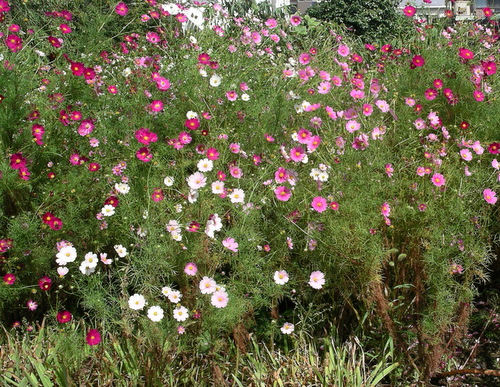
This is definitely not the kind of pepperoncini I ran around town looking for back in May:  As it turns out, this kind of pasta is actually called peperoncino. This batch is from a mix, consisting of a liquid sauce packet (olive oil, garlic oil, soy sauce, and some other stuff) and a separate toppings packet (toasted garlic, parsley, and sliced dried togarashi). It's quite delicious.
Here are some more manhole covers. These ones are from Akita prefecture. 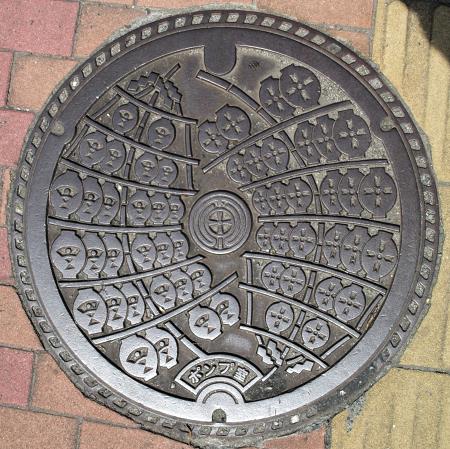 These racks of lanterns feature prominently in Akita City's largest festival, Kanto Matsuri. The manhole cover is in the city's downtown area. 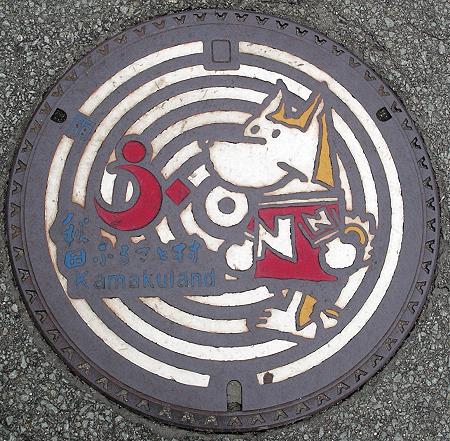 Kamakurando Kamakurando, a tourist destination in Yokote City, has its own manhole cover design. The dog is Kamakurando's mascot, Nobu. Of course, he's an Akita dog. 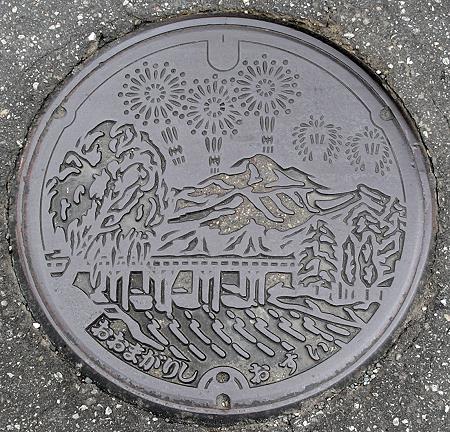 Omagari is a city famous for fireworks, and the site of Japan's largest fireworks competition.
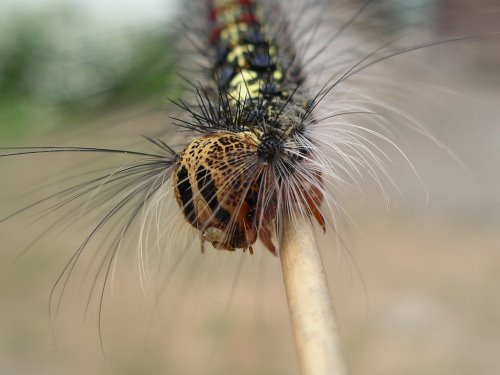 Battari-mura Battari-mura was full of these caterpillars when we were there in July.
Monday, September 15, 2008, 4:29 PM GeneralPosted by stefanie The air smells like incense. It has almost every day for the last week. One of our neighbors died on Tuesday, so the family's house has been draped in mourning since then. It's a very haunting scene. A black-and-white banner hangs above the front door to the home. A small stand holding two basins, one of water and one of salt (considered purifying agents), stands between the front door and a sheltered wooden sign announcing the name of the deceased, birth and death dates, and information about the proceedings. The name and dates also appear on signs on the nearest major road. The funerary accoutrements will remain in place for approximately seven days, the duration of the initial period of mourning. After that, they will come down, leaving the family to mourn in a less public manner — save for the smell of incense in the air.
A friend gave me a bag of satoimo today. 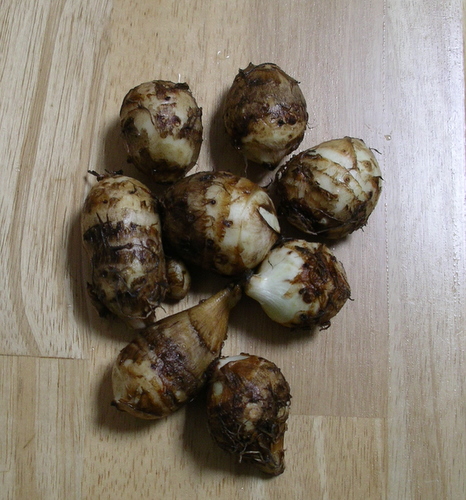 Satoimo Satoimo are probably better known in America as taro root, the basis of the Hawaiian food poi. Here, they're most often boiled, peeled, and served in miso soup. I have a new Japanese-language cookbook that rather conveniently has a bunch of satoimo recipes in it, so I made one of them tonight. 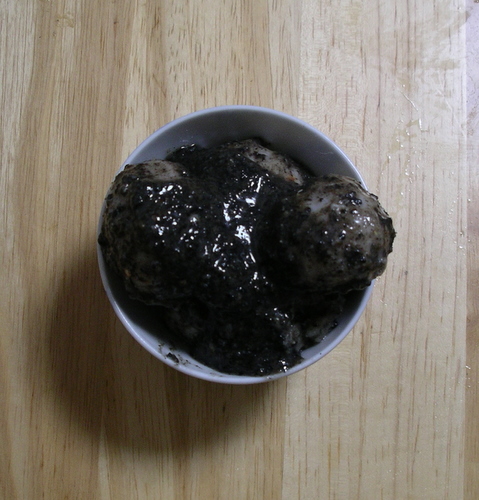 This is satoimo no kurogoma miso ae, taro with black sesame and miso dressing. It was quite tasty ¡½ the satoimo themselves have a mild flavor that went nicely with the stronger black sesame. And a Manhattan.
The leaves are already starting to change color here. Last weekend, this was the scene around an old farmhouse located in the village that makes up part of the city museum. 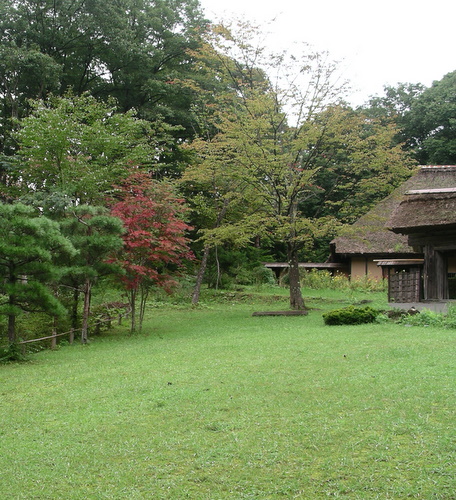
Tuesday, September 9, 2008, 12:46 AM GeneralPosted by stefanie My face has been feeling pretty gross over the last few days ¡½ rather itchy and tight, like the skin is too dry. The fall flowers are blooming, so I'd been chalking the grossness up to allergies. Upon further consideration and a look at the tatami after I picked our futons up this morning, I think I've identified the culprit: mold.
You'd think that living in humid Maryland for eight years would have taught us everything we needed to know about controlling mold in our house, but no. That was only a basic education. Japan is so humid so much of the time that things take on moisture very easily and never really dry out. I've heard stories of people leaving their apartments in Tokyo for August vacations and returning to walls covered with mold. There are lines of desiccant products for all areas of your house, including the shoebox that sits in the genkan. We've got some charcoal, but we've never investigated any of the other products. Perhaps we should ¡½ ever seen moldy shoes? I hadn't, until last week.
Mold is most disheartening to find in the tatami. It gets into the weave of the mats and can only be gotten out by lots of careful scrubbing (with the weave, please) with a rag or small brush and vinegar. Nothing makes me feel like Cinderlawyer quite as much as cleaning mold out of the tatami. There I sit, methodically wiping the mats, peering closely at each newly cleaned patch and watching the rag turn black as I go. Sadly, no cartoon mice entertain me during my labors.
Tomorrow, we deploy the charcoal.
[ 3 comments ] permalink
Lanterns are a common festival decoration. At the city museum's festival today, the road was lined with small lanterns decorated by children from a local elementary school. This one was particularly wonderful. 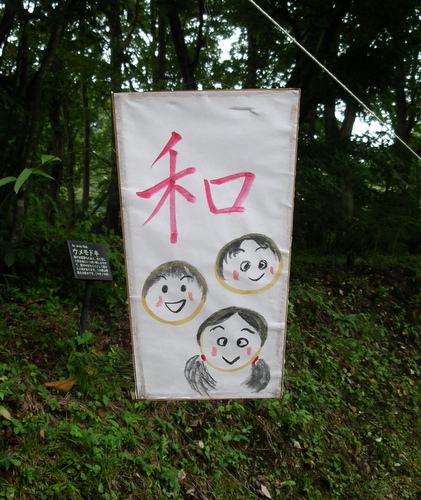 The kanji is wa, meaning "peace" or "harmony."
Beverages that come in tall cans have a sketchy reputation in America, at least where I'm from. They're usually full of cheap malt liquor or beer. They can often be found lying in the gutter, surrounded by the brown paper bags used to conceal them from the eyes of people who might happen upon the people drinking them. Which is why these amuse me tremendously: 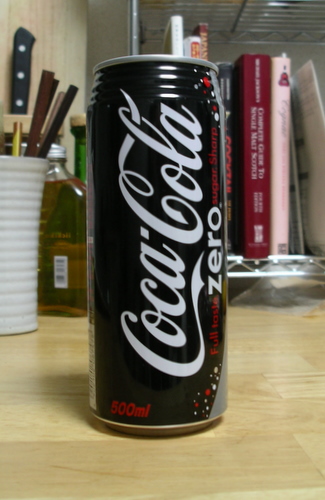 The all-American drink, now available in tallboys!
Back Next
|
|





 Calendar
Calendar




